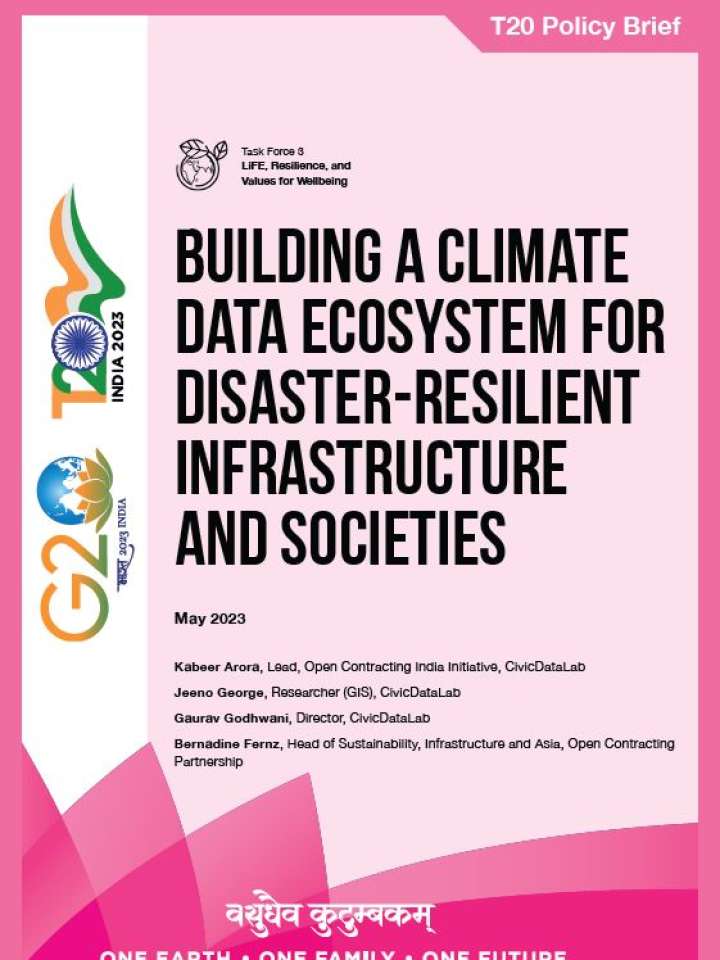Building a climate data ecosystem for disaster-resilient infrastructure and societies
This brief highlights that accurate and timely data is necessary in order to build disaster-resilient infrastructure, cities, and societies. Data can be used not only to inform policies, decisions and actions, but also to assess the impact of efforts or investments made towards building resilience, which can be seen in the form of budgetary allocations, public procurement data, and other expenditure datasets. However, data which could help make disaster-risk response and management more effective, is scattered across different agencies, systems, scales, and formats, leaving the data of less utility for impactful decision-making.
To begin with, there is no consensus yet on what constitutes ‘comprehensive climate data’, and for this reason, many critical datasets such as those on public expenditures are not considered in discussions on climate action. For example, WESR – Climate Geospatial Information which includes macroeconomic indicators such as ‘Average Annual Loss’, fails to account for public expenditures made to address losses caused by climate change. This often results in inefficient procurement processes and policies or ad-hoc responses that fail to adequately cater to urgent, often life-saving needs in times of emergency or provide a sustainable long-term solution where needed.
Explore further
